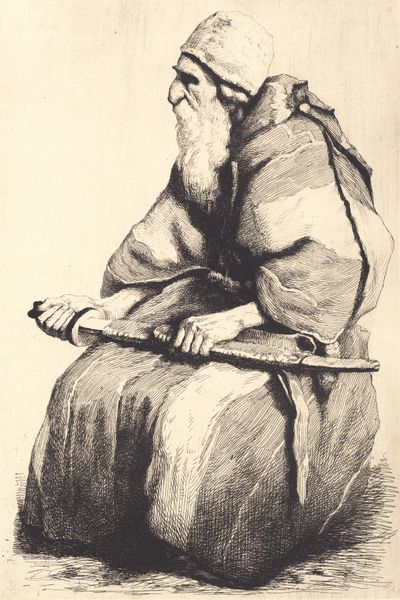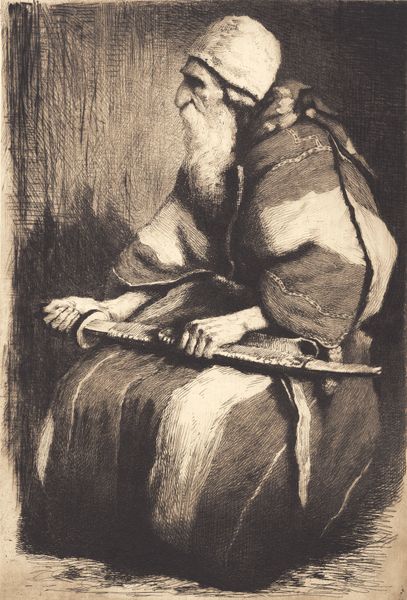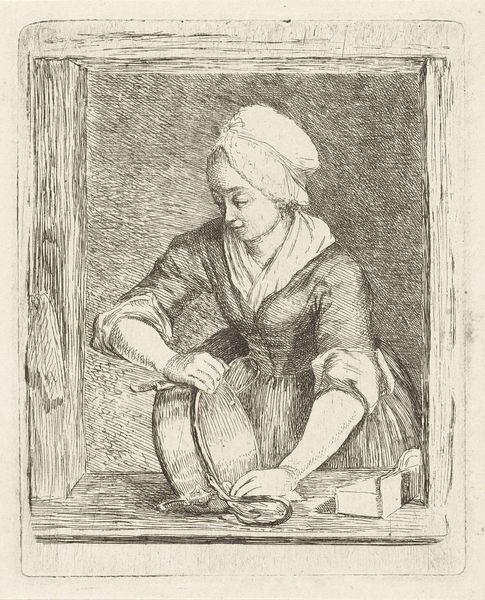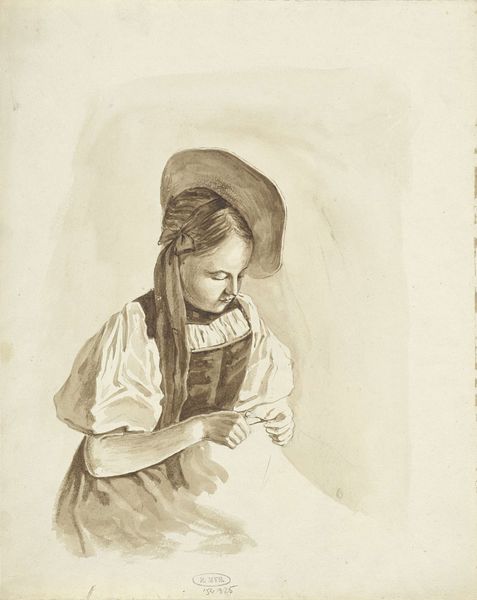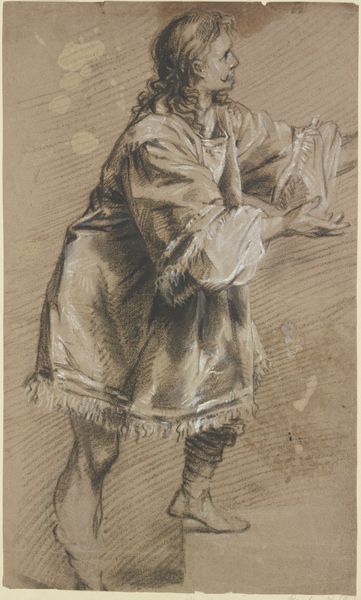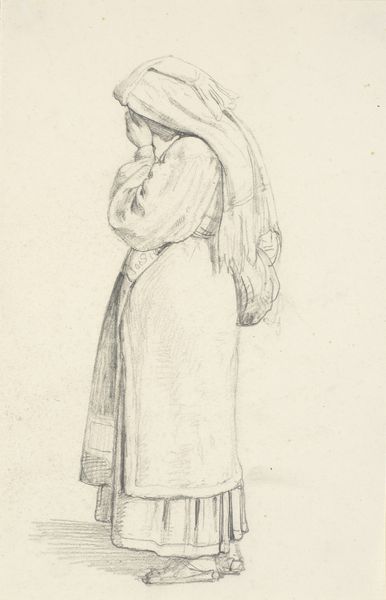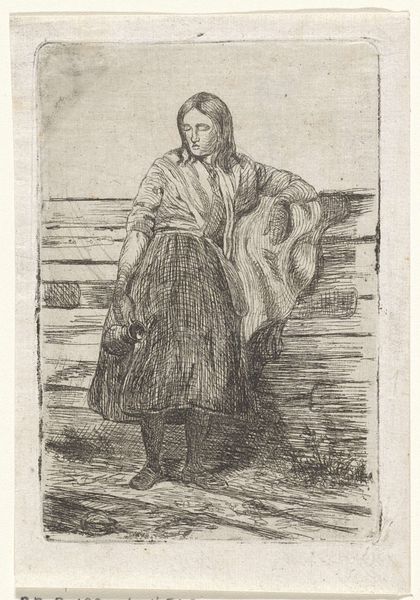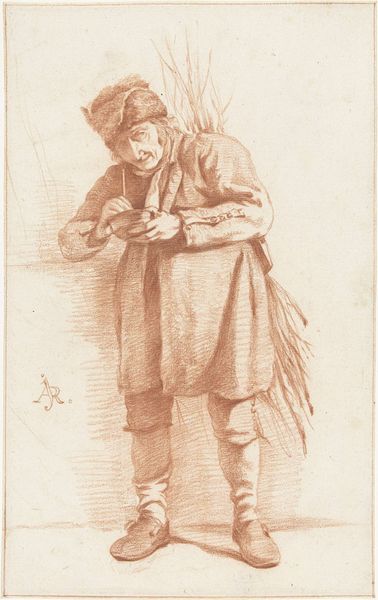
print, etching
#
portrait
# print
#
etching
#
genre-painting
#
realism
Dimensions: 169 mm (height) x 130 mm (width) (plademaal)
Editor: This is "Strikkersken," or "The Knitter," an 1890 etching by Frans Schwartz, housed in the SMK. I'm immediately drawn to the detail in the woman's hands and clothing; the process of etching really highlights the textures. What's your take on this piece? Curator: My focus goes straight to the labour enacted here. We have an image constructed through labor – the labor of the artist producing the etching. Look closely: the cross-hatching builds the form out of sheer effort and time. Now think about the subject; a woman, engaged in the traditionally feminine labour of knitting. Editor: That's interesting, I was just seeing her as a portrait. Curator: Consider the social context. Etchings were a readily available medium. Realism focused on depictions of everyday life. What does it mean when "high art", in the form of a print, chooses as its subject a working woman? Editor: It feels like it elevates the ordinary, or at least acknowledges it. It makes me wonder about the intended audience, were these prints affordable for the working class? Curator: Perhaps not originally, but the accessibility of prints certainly democratized art viewing to some degree. Consider how the availability of materials like etching plates allowed artists to distribute their work more widely, compared to unique paintings for instance. It’s about the means of production, and who has access. Editor: So the choice of materials and subject are both intertwined with questions of labor and class. I hadn't considered the etching itself as a form of labor so explicitly. Thank you, I am looking at the artwork with fresh eyes. Curator: Indeed. Reflecting on these elements can completely change how we understand art.
Comments
No comments
Be the first to comment and join the conversation on the ultimate creative platform.


